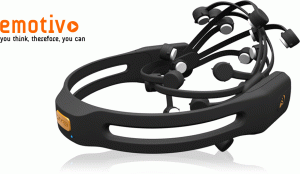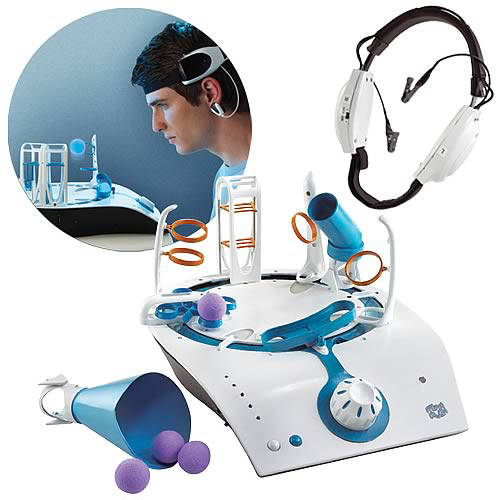Double Dip: Take A Ride on the Brain Bike
 Physical exercise, especially cardio, is good technique for improving brain function. There is no doubt about that. So is specially designed cognitive training software that gives your brain a workout by solving problems, meeting perceptual challenges and even playing games. Imagine combining the two – exercising while working with cognitive training software – to get a double dose of brain training in a single session. That is exactly what the NeuroActive Bike does.
Physical exercise, especially cardio, is good technique for improving brain function. There is no doubt about that. So is specially designed cognitive training software that gives your brain a workout by solving problems, meeting perceptual challenges and even playing games. Imagine combining the two – exercising while working with cognitive training software – to get a double dose of brain training in a single session. That is exactly what the NeuroActive Bike does.
Combing their NeuroActive cognitive training software with an exercise bike the Brain Center of America is the first to introduce a brain bike.
They are available in some health clubs in France, the US and Canada. Here is a list. A few schools in the US are introducing them. For example, I found this story and photo (to the right) about Madison School in Naperville, Illinois.
I have not seen any studies on the effectiveness of this type of double dipping but will keep an eye out. In the meantime I am interested to hear from readers that have taken a ride on the Brain Bike.
Categories: Cognitive Decline, Lifestyle, Memory and Learning, Mental Focus, Perception, Software, Training Tags: brain training, cognitive fitness, exercise
How Fast Do You Think? Should You Care?
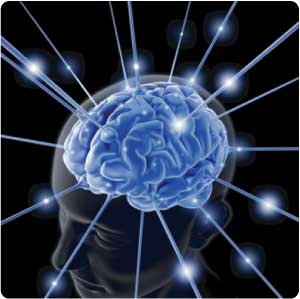 The speed at which your brain processes information is a fundamental measure of cognitive efficiency. Faster processing speeds have been linked to more effective intelligence, memory formation and even longevity. In short, the faster you think the smart you are! Happily, you can easily measure, and with practice improve, your thinking speed. Tools and techniques for increasing the speed of thought will be a frequent topic on the Next Brain Blog.
The speed at which your brain processes information is a fundamental measure of cognitive efficiency. Faster processing speeds have been linked to more effective intelligence, memory formation and even longevity. In short, the faster you think the smart you are! Happily, you can easily measure, and with practice improve, your thinking speed. Tools and techniques for increasing the speed of thought will be a frequent topic on the Next Brain Blog.
One way to get started is to take the Thinking Speed Test at Cognitive Labs. You need to go through a brief registration but it is worth it. They give you a short reaction time test and some handy feedback. You can even track your performance over time.
Try it out and post your results. Especially interested in what techniques you are using to improve it. My initial score was 241 milliseconds.
Source: Image of the Brain
Categories: IQ and EQ, Memory and Learning, Perception, Software, Training Tags: brain training, cognitive fitness, games, processing speed
Can You Use the Internet and Mobile Phones to Rewire Your Brain?
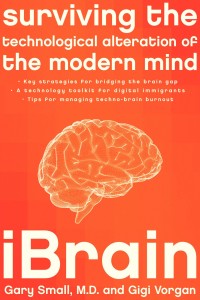 Email, search engines, social networking sites, text messaging, blogging, twitter, web-based phones, GPS, playing/making music/videos, taking and instantly sharing pictures and a slew of other technological capabilities have become widely available thanks to the internet, mobile phones and other hand-held gadgets. These new ways of creating, finding, sharing and using information are so powerful and pervasive that they are transforming how we learn, make-decisions, collaborate creatively and do many other brain-intense activities.
Email, search engines, social networking sites, text messaging, blogging, twitter, web-based phones, GPS, playing/making music/videos, taking and instantly sharing pictures and a slew of other technological capabilities have become widely available thanks to the internet, mobile phones and other hand-held gadgets. These new ways of creating, finding, sharing and using information are so powerful and pervasive that they are transforming how we learn, make-decisions, collaborate creatively and do many other brain-intense activities.
Some argue that they make us smarter or dumber. For example, the Atlantic Magazine article, Is Google Making Us Stupid? triggered a firestorm of discussion. Fortunately, the answer is no. Google and using search engines actually makes us smarter! Others take the point further and argue that the collective effect of all these technologies is driving a rewiring of our brains on a basic level. For a good introduction to this type of argument check out the book, Surviving the Technological Alteration of the Modern Mind.
The book’s theme is controversial but the authors do a great job outlining the specific technologies and their likely impact on boosting or dowsing cognitive performance. This is just the kind of information we will be covering in the Next Brain Blog. I will look at each claim and recommendation in later posts.
In the meantime, I am interested to hear reader stories on how the internet or mobile computing is being used to improve cognitive performance and build a better and longer-lasting brain.
Categories: Books, Decision Making, IQ and EQ, Memory and Learning, Perception, Software Tags: creativity
Coffee: The Preferred Drink of High Performing Long-Lasting Brains
 In the Next Brain Blog we explore specific ideas and tools for improving cognitive performance and brain function. Low lying fruit or approaches that are simple, scientifically proven and easy to enact are of special interest.
In the Next Brain Blog we explore specific ideas and tools for improving cognitive performance and brain function. Low lying fruit or approaches that are simple, scientifically proven and easy to enact are of special interest.
Consider for example the simple act of drinking coffee or a relate caffeinated beverage. The scientific evidence for the brain-enhancing effects of coffee are really stacking up. A recent post on Psychology Today’s New Brain Blog, The Fountain of Youth in A Cup of Coffee – Ladies Only, reports:
“Coffee lovers appreciate the mood kick and mental boost a delicious cup of java provides. The enhanced learning, memory, and speed of information processing caffeine delivers has been well documented scientifically. New research published on-line in the current issue of the Journal of Alzheimer’s Disease, reports that coffee can also ward off some effects of aging on the brain. Previous research has shown that caffeine lessens the damage of Alzheimer’s disease caused by the toxic peptide that forms the senile plaques in brains of Alzheimer’s patients. This new study examined 641 elderly persons (over the age of 65) living in three cities in France, Bordeaux, Dijon, and Montpellier. Researchers found a relation between coffee consumption and prevention of cognitive deterioration including the loss of brain tissue in the elderly.”
The post goes on to discuss a recent brain scanning study that shows women (but not men) that drink 3-cups (but not less) of coffee per day lose less white matter after age 50. Thus the subtitle on the post – for women only. But the other studies and effects appear gender neutral.
Boosting energy, mood, memory, learning, processing speed as well as blocking aspects of cognitive decline… all from drinking coffee!
Coffee can have other effects as well. Any changes in diet, physical activity or lifestyle should be considered carefully.
Source: Image of Coffee Man
Categories: Cognitive Decline, Diet, Manage Emotions, Memory and Learning, Mental Focus Tags: mental energy
Build Your Brain By Making Better Arguments
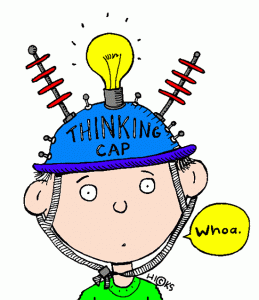 Making formally sound and psychological convincing arguments is hard mental work. It is a form of critical reasoning and therefore practicing it is a great technique for improving your thinking (cognitive) skills. Argumentation and how to use it to improve cognitive performance will be a frequent topic on the Next Brain Blog.
Making formally sound and psychological convincing arguments is hard mental work. It is a form of critical reasoning and therefore practicing it is a great technique for improving your thinking (cognitive) skills. Argumentation and how to use it to improve cognitive performance will be a frequent topic on the Next Brain Blog.
We can learn how to make good arguments much as we can learn to make good food, music or art. It takes an understanding of the fundamentals of argumentation, tons of practice and taking on new and challenging situations regularly. Fortunately, the fundamentals of argumentation are clear, there are many opportunities to constructively practice at home, work and in the community and new challenges are presented to us daily.
Getting started in the art of argument requires a clear statement of the point you want to make (the conclusion) as well as a clear statement of what justifies it (premises).
Just writing down your premises and conclusion can be a difficult challenge but one that adds enormously to the clarity of thought.
A good argument is one where the conclusion can be logically inferred from the premises, is free of logical fallacies, anticipates and deflates counter arguments, has well-justified premises and clearly delineates factual claims from opinions.
For a great introduction to the ideas of formal and informal validity of arguments check out the post, What Makes a Good Argument? on the Thinking Matters Blog. It covers the 9 types for formal validity you are likely to use as well as 8 common informal mistakes you are likely to commit.
You can show that your argument is formally valid by demonstrating the conclusion (Q) follows from the premises (P) using one or more of the rules of deductive logic. For example, one rule is called modus ponens (and I quote from Thinking Matters):
“Modus ponens is Latin. It means “the mode which affirms”. Knowing the English translation makes it very easy to follow:
- P –> Q
- P
- Q
In plain English: if P, then Q; P, therefore Q. “P” and “Q” represent propositions, so it’s helpful to substitute in simple phrases for them, to get a better idea of what the rule is saying. For example, let P mean “it is raining”, and let Q mean “the ground is wet”. So:
- If it is raining, then the ground is wet.
- It is raining.
- Therefore, the ground is wet.
As you see, this is really a very simple and obvious rule—as you’ll find that all the fundamental rules of logic are.”
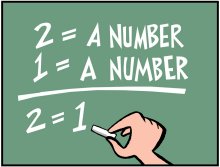 Formal validity is not enough. Your argument must also must avoid falling into a logic trap. For example, consider the argument from ignorance (quoting from Thinking Matters):
Formal validity is not enough. Your argument must also must avoid falling into a logic trap. For example, consider the argument from ignorance (quoting from Thinking Matters):
“Arguing that a belief is false because there is insufficient evidence for it.
- No one can disprove the existence of God. Therefore, God exists.
- There’s no evidence that the Red Sea was ever parted. Therefore, the account in Exodus is a myth. (Notice, though, that an argument saying that there is evidence that the Red Sea was not ever parted would not be fallacious.)”
I have heard many arguments made this way. It may take you an hour or so to work through all 17 principles and really understand each one. However, it is well worth your time. With a basic understanding you can use them as a quick checklist to refine the clarity, power and validity of your arguments.
I am interested to hear from readers that practice the art of argumentation and how it has impacted your effectiveness as a thinker.
Sources: Image of Thinking Cap, Image of Logical Fallacy
Categories: IQ and EQ, Problem Solving, Training Tags: critical reasoning, critical thinking
World’s Top Brain Experts Confirm Techniques for Enhancing Cognitive Performance
 Once every 10 years a special conference is held to explore what we know about the cognitive neuroscience of our brain’s frontal lobes. The conference is called The Frontal Lobes and was held last week. Progress over the last 10 years has been tremendous:
Once every 10 years a special conference is held to explore what we know about the cognitive neuroscience of our brain’s frontal lobes. The conference is called The Frontal Lobes and was held last week. Progress over the last 10 years has been tremendous:
Drs. Stuss and Knight are world-renowned frontal lobes experts who produced the last global conference on the frontal lobes 10 years ago in Toronto. They say the last decade has been a gold mine of new knowledge and given rise to emerging fields such as social neuroscience, neuroeconomics, neuroscience and the law, neuromarketing, neurodevelopment and neurorehabilitation.
Of special interest to readers of the Next Brain Blog is the focus on techniques for improving cognitive performance. A post on the conference blog, We can enhance cognitive performance in later years!, provides a nice review of techniques that have scientific support. These include:
- Intensive cognitive training
- Playing video games
- Aerobic exercises
- Delaying retirement or staying mentally active after retirement
In addition, cognitive decline with age is not as inevitable as once thought. Some studies showed variability among individuals and even some cases of spontaneous reversal
“Dr. Lars Nyberg (Umea University, Sweden), a former post doc at the Rotman Research Institute – presented data from a large study that has followed the physical and cognitive health of over 4,000 adults aged 35 – 80 years during a two-decade period to see when brain failure starts to show. He found that the decline starts gradually around the mid 30s and then nose-dives around 60-65 years of age. But if there is a silver lining here, it is that all older adults are not alike in this trajectory. Studies have found variability of cognitive performance. In fact, there have been “rare” cases of spontaneous positive reversals of decline in this age group.”
These techniques and points of view have been covered elsewhere in this blog. The Frontal Lobes conference provides impressive scientific support for believing we now have the know-how, technologies and supplements for enhancing our cognitive performance and developing more resilient and longer-lasting brains.
Categories: Other Tags:
Doing Simple Math Fast is a Major Brain Stimulant
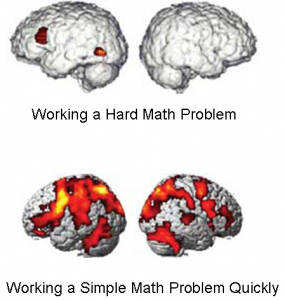 Doing simple calculations (3 + 5 = ?) very fast is becoming a popular brain training technique. It was pioneered by Dr. Ryuta Kawashima a Neuroscientist from Japan. He is well-known for the book Train Your Brain: A Better Brain in 60 Days, and BrainAge the Nintendo-based brain fitness system that we have covered on the Next Brain Blog before.
Doing simple calculations (3 + 5 = ?) very fast is becoming a popular brain training technique. It was pioneered by Dr. Ryuta Kawashima a Neuroscientist from Japan. He is well-known for the book Train Your Brain: A Better Brain in 60 Days, and BrainAge the Nintendo-based brain fitness system that we have covered on the Next Brain Blog before.
Similar techniques are popping up in many other brain training games and programs, especially those designed for mobile phones. For example, check out the Brain Blast Trainer series of iPhone apps.
The question is, does a daily dose of rapid mental mathematics improve your cognition, and if so in what way?
I have not been able to find literature that deals with this question. Dr. Kawahima’s research however, seems to clearly indicate (see figure) that doing simple math calculations rapidly stimulates the brain far more than doing hard math problems. Working the brain hard, like working a muscle hard should make it “bigger and stronger”.
I would like to hear from readers that use simple math as part of their brain fitness workout.
Source: Brain scanning images adapted from BrainAge Instruction Booklet
Categories: Books, Cognitive Decline, Problem Solving, Software, Training Tags: cognitive fitness, games
Use Off Prescription Drugs to Enhance Cognition?
 Drugs designed for Alzheimer’s disease, ADHD, narcolepsy and other neurological disorders are finding new off-prescription use as cognitive enhancers. Students, professionals and many other citizen have reported using prescription-only drugs such as Aderaal (a form of ritlan for ADHD) and Modafinil (a stimulant used to treate narcolepsy) to boost mental performance. Typical non-medical uses of these “smart drugs” include efforts to improve concentration, enhance memory and create mental energy.
Drugs designed for Alzheimer’s disease, ADHD, narcolepsy and other neurological disorders are finding new off-prescription use as cognitive enhancers. Students, professionals and many other citizen have reported using prescription-only drugs such as Aderaal (a form of ritlan for ADHD) and Modafinil (a stimulant used to treate narcolepsy) to boost mental performance. Typical non-medical uses of these “smart drugs” include efforts to improve concentration, enhance memory and create mental energy.
Using smart drugs without a prescription is illegal but they are easily available on the internet and from street sources. As reported in the commentary, Toward responsible use of cognitive-enhancing drugs by the healthy, in the prestigious scientific journal Nature:
“Today, on university campuses around the world, students are striking deals to buy and sell prescription drugs such as Adderall and Ritalin — not to get high, but to get higher grades, to provide an edge over their fellow students or to increase in some measurable way their capacity for learning.”
And it is not just students but professors, physicians, lawyers, engineers and many other professionals.
Not surprising there is little or no scientific evidence that these drugs work to enhance cognitive performance of healthy people. However, the subjective effect of increased mental energy seems unmistakable.
With many people experimenting with smart drugs, and a growing number of calls for studying their use to achieve peak cognitive performance, they will be a frequent topic in the Next Brain Blog.
Please leave a comment if you have experience in using smart drugs that you want to share with other readers.
Source: Image of Smart Drugs
Categories: College Student, Lifestyle, Memory and Learning, Mental Focus, Professional Tags: mental energy, smart drugs
Using Neurofeedback to Train Your Mind
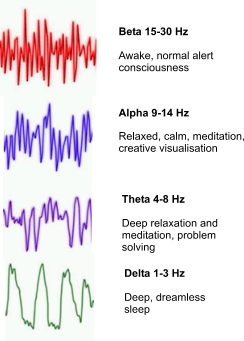 Neurofeedback training devices translate brainwaves into an external signal such sounds, graphs on a computer screen, movement of your computer’s cursor, action in a video game and even the motion of remote controlled toys. Being able to hear or see your brainwaves in this way provides essential feedback for learning how to control them to improve mental focus, modulate your mood and sharpen your thinking.
Neurofeedback training devices translate brainwaves into an external signal such sounds, graphs on a computer screen, movement of your computer’s cursor, action in a video game and even the motion of remote controlled toys. Being able to hear or see your brainwaves in this way provides essential feedback for learning how to control them to improve mental focus, modulate your mood and sharpen your thinking.
 Neurofeedback has been proven to work in a clinical setting. You can go to a therapist and in about 10 weeks achieve some real results. A typical setup is shown to the left.
Neurofeedback has been proven to work in a clinical setting. You can go to a therapist and in about 10 weeks achieve some real results. A typical setup is shown to the left.
Devices for use by consumers at home are starting to hit the market. There are general purpose brain computer interfaces (BCI) such as the EPOC headset from Emotiv. It sells for $300 and comes with some basic games.
The only other consumer-level BCI I am aware of is being sold by Neurosky. It is cheaper ($199) but it comes with a single sensor versus the 14 for EPOC. The Neurosky technology is being used to develop mind-controlled toys. Check out Mattel’s Mindflex below.
It is not clear if the at-home neuofeedback devices are producing results or if they even work well. Consumer reviews tend to be mixed. For example, Mindflex Game has 58 customer reviews on Amazon:
- 5 star (14)
- 4 star (18)
- 3 star (8)
- 2 star (6)
- 1 star (12)
No matter, as the technology improves there can be little doubt that neurofeedback devices will become a powerful force for improving our cognitive performance. Brain computer interfaces, mind controlled toys and video games as well as other consumer-level neurofeedback devices will be covered frequently in the Next Brain Blog.
I am very interested to hear from readers that use neurofeedback in a clinical setting or at home. Please leave a comment and share your experiences.
Source: Image of Brainwaves and clinical use of Neurofeedback.
Categories: Executive Function, Mental Focus, Perception, Software, Training Tags: BCI, brain training, Brainwave Entrainment, games, neurofeeback
Does Asking Why Make You Smarter?
 Perhaps not but asking why five times in a row is a simple and proven technique for getting to the root cause of a problem or issue. And getting to the root cause greatly improves your odds of finding good solutions.
Perhaps not but asking why five times in a row is a simple and proven technique for getting to the root cause of a problem or issue. And getting to the root cause greatly improves your odds of finding good solutions.
The technique known as the five-whys was originally developed by Sakichi Toyoda, often called the father of the industrial revolution in Japan. Let’s assume for example that a customer order is not shipped from the dock on time. Here is how the technique works:
- Why1: Why did the shipment not leave the dock on time?
- The order was not completed before the last truck left
- Why2: What the order not complete?
- The automated assembler on line 3 broke down
- Why3: Why did the automated assembler break down?
- We failed to complete the maintenance schedule and the the control froze
- Why4: Why did we fail to complete maintenance?
- Frank, a new employee forgot to do it
- Why5: Why did Frank forget to do it?
- It was not included in his new employee training
Although a bit simplistic it shows the power of the five-whys technique for driving thinking to the root cause. A problem with a customer order was ultimately caused by a fault in new employee training. Learning such simple techniques is a powerful way to improve cognition and so they will be a frequent topic on the Next Brain Blog.
For a more detailed overview, including some of the short comings of the technique check out How to use the Five WHY approach.
Please post a comment and share your success with the five-whys or related problem solving techniques.
Source: Image of the Hand.
Categories: Problem Solving, Training Tags: quality technique

